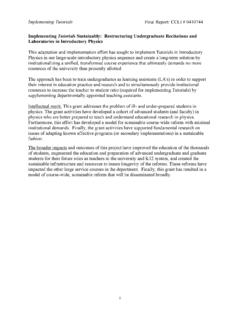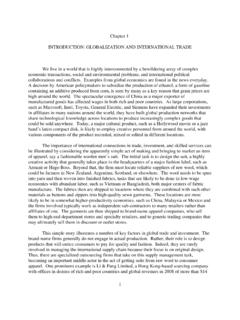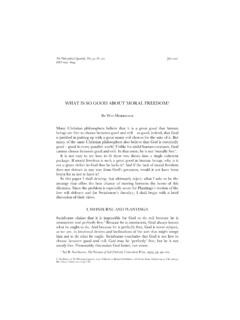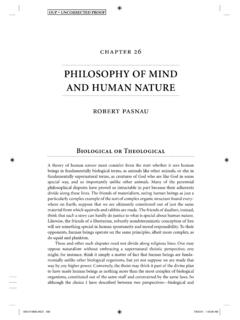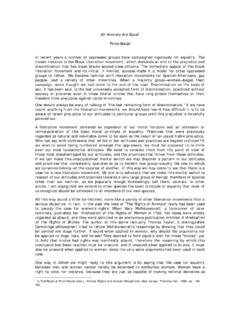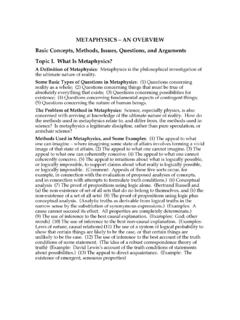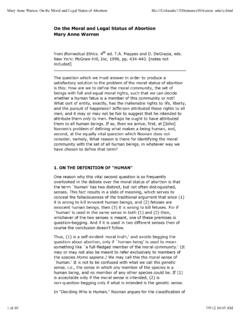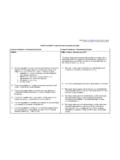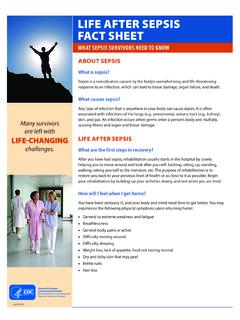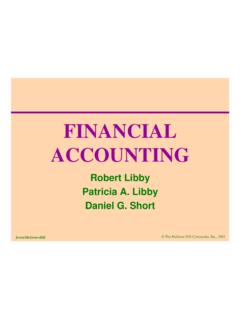Transcription of CHAPTER IV NORMED LINEAR SPACES AND BANACH SPACES
1 CHAPTER IVNORMED LINEAR SPACES AND BANACH SPACESDEFINITIONAB anach spaceis a real NORMED LINEAR space that is acomplete metric space in the metric defined by its norm. AcomplexBanach spaceis a complex NORMED LINEAR space that is, as a real normedlinear space , a BANACH space . IfXis a NORMED LINEAR space ,xis anelement ofX,and is a positive number, thenB (x) is called theballof radius around x, and is defined byB (x) ={y X: y x < }.Theclosed ballB (x) of radius aroundxis defined byB (x) ={y X: y x }.ByB andB we shall mean the (open and closed)balls of radius around NORMED LINEAR spacesXandYareisometrically isomorphicifthere exists a LINEAR isomorphismT:X Ywhich is an isometry this case,Tis called anisometric , .. Xnarennormed LINEAR SPACES , we define a norm on the(algebraic) direct sumX= ni=1 Xiby (x1.)
2 , xn) =nmaxi=1 xi .This is frequently called themax first order of business is to characterize those locally convex topo-logical vector SPACES whose topologies are determined by a norm, ,those locally convex topological vector SPACES that are a topological vector space . A subsetS 6566 CHAPTER IVXis calledboundedif for each neighborhoodWof 0 there exists apositive scalarcsuch thatS (Characterization of Normable SPACES )LetXbea locally convex topological vector space . ThenXis a normable vectorspace if and only if there exists a bounded convex neighborhood of a normable topological vector space , let be anorm onXthat determines the topology. ThenB1is clearly a boundedconvex neighborhood of , letUbe a bounded convex neighborhood of 0 assume thatUis symmetric, since, in any event,U ( U) is alsobounded and convex.
3 Let be the seminorm (Minkowski functional) onXassociated toUas in Theorem We show first that is actually , letx6= 0 be given, and choose a convex neighborhoodVof 0such thatx / that, iftx V,then|t|< >0 sothatU cV,and note that iftx U,thentx cV,whence|t|< , recalling the definition of (x), (x) =1supt>0,tx Ut,we see that (x) 1/c >0,showing that is a must show finally that the given topology agrees with the onedefined by the norm .Since, by Theorem , is continuous, it fol-lows immediately thatB = 1( , ) is open in the given topol-ogy, showing that the topology defined by the norm is contained in thegiven topology. Conversely, ifVis an open subset of the given topol-ogy andx V,letWbe a neighborhood of 0 such thatx+W >0 so thatU using Theorem , we see thatB1= 1( ,1) U cW,whenceB1/c= 1( ,(1/c)) W,andx+B1/c shows thatVis open in the topology defined by thenorm.
4 (a) (Characterization of BANACH SPACES ) LetXbea NORMED LINEAR space . Show thatXis a BANACH space if and only ifevery absolutely summable infinite series inXis summable inX.(Aninfinite series xnisabsolutely summableinXif xn < .) HINT:If{yn}is a Cauchy sequence inX,choose a subsequence{ynk}for which ynk ynk+1 <2 k.(b) Use part a to verify that all the spacesLp(R), 1 p ,areBanach SPACES , as isC0( ). NORMED LINEAR SPACES AND BANACH SPACES67(c) Ifc0is the set of all sequences{an}, n= 0,1, .. ,satisfyingliman= 0,and if we define {an} = max|an|,show thatc0is a Banachspace.(d) LetXbe the set of all continuous functions on [0,1],which aredifferentiable on (0,1).Set f = supx [0,1]|f(x)|.Show thatXis anormed LINEAR space but is not a BANACH space .(e) IfX1, .. , Xnare NORMED LINEAR SPACES , show that the direct sum ni=1Xi,equipped with the max norm, is a NORMED LINEAR space .
5 If eachXiis a BANACH space , show that ni=1 Xiis a BANACH space .(f) LetX1, .. , Xnbe NORMED LINEAR SPACES . Letx= (x1, .. , xn) bein ni=1Xi,and define x 1and x 2by x 1=n i=1 xi ,and x 2= n i=1 xi that both 1and 2are norms on ni= furtherthat x x 2 x 1 n x .(g) Let{Xi}be an infinite sequence of nontrivial NORMED linearspaces. Prove that the direct product Xiis a metrizable, locally con-vex, topological vector space , but that there is no definition of a norm on Xithat defines its topology. HINT: In a NORMED LINEAR space , givenany bounded setAand any neighborhoodUof 0, there exists a numbertsuch thatA (Schwartz SpaceSis Not Normable) LetSdenoteSchwartz space , and let{ n}be the seminorms (norms) that define thetopology onS: n(f) = supxmax0 i,j n|xjf(i)(x)|.
6 (a) IfVis a neighborhood of 0 inS,show that there exists an integernand an >0 such that 1n( , ) V; , if n(h)< ,thenh V.(b) Given the nonnegative integernfrom part a, show that thereexists aC functiongsuch thatg(x) = 1/xn+1/2forx thatsupxmax0 i,j n|xjg(i)(x)|< .68 CHAPTER IV(Of course,gis not an element ofS.)(c) Letnbe the integer from part a and letfbe aC function withcompact support such that|f(x)| 1 for allxandf(0) = eachintegerM >0,definegM(x) =g(x)f(x M),wheregis the functionfrom part b. Show that eachgM Sand that there exists a positiveconstantcsuch that n(gM)< cfor allM; , ( /c)gM Vfor , show that for eachM 2, n+1(gM) M .(d) Show that the neighborhoodVof 0 from part a is not : DefineWto be the neighborhood 1n+1( ,1),and showthat no multiple ofWcontainsV.
7 (e) Conclude thatSis not (Subspaces and Quotient SPACES )LetXbe a Ba-nach space and letMbe a closed LINEAR subspace.(1)Mis a BANACH space with respect to the restriction toMof thenorm onX.(2)Ifx+Mis a coset ofM,and if x+M is defined by x+M = infy x+M y = infm M x+m ,then the quotient spaceX/Mis a BANACH space with respect tothis definition of norm.(3)The quotient topology onX/Magrees with the topology deter-mined by the norm onX/Mdefined in part certainly a NORMED LINEAR space with respect to therestricted norm. Since it is a closed subspace of the complete metricspaceX,it is itself a complete metric space , and this proves part leave it to the exercise that follows to show that the given defini-tion of x+M does makeX/Ma NORMED LINEAR space . Let us showthat this metric space is complete.
8 Thus let{xn+M}be a Cauchysequence will suffice to show that some subsequence has alimit may replace this Cauchy sequence by a subsequencefor which (xn+1+M) (xn+M) = (xn+1 xn) +M <2 (n+1).Then, we may choose elements{yn}ofXsuch that for eachn 1 wehaveyn (xn+1 xn) +M, NORMED LINEAR SPACES AND BANACH SPACES69and yn <2 (n+1).We choosey0to be any element ofx1+ Nn=0yn,then it follows routinely that{zN}is a Cauchy sequenceinX,whence has a claim thatz+Mis the limit of thesequence{xN+M}.Indeed, (z+M) (xN+M) = (z xN) +M =infy (z xN)+M y .Sincez= n=0yn,and since N 1n=0yn xN+M,It follows that n=Nyn (z xN) + , (z+M) (xN+M) n=Nyn n=N2 (n+1)= 2 N,completing the proof of part leave part 3 to the exercise that as in the preceding theorem.(a) Verify that the definition of x+M ,given in the precedingtheorem, makesX/Minto a NORMED LINEAR space .
9 (b) Prove that the quotient topology onX/Magrees with the topol-ogy determined by the norm onX/M.(c) SupposeXis a vector space , is a seminorm onX,andM={x: (x) = 0}.Prove thatMis a subspace (x+M) = infm M (x+m).Show thatpis a norm on the quotient (a) SupposeXandYare topologically isomorphicnormed LINEAR SPACES , and letSdenote a LINEAR isomorphism ofXontoYthat is a homeomorphism. Prove that there exist positive constantsC1andC2such that x C1 S(x) and S(x) C2 x 70 CHAPTER IVfor allx that, if two norms 1and 2determineidentical topologies on a vector spaceX,then there exist constantsC1andC2such that x 1 C1 x 2 C2 x 1for allx X.(b) SupposeSis a LINEAR transformation of a NORMED LINEAR spaceXinto a topological vector thatS(B1) contains aneighborhoodUof 0 thatSis an open map come next to one of the important applications of the Baire cat-egory theorem in functional (Isomorphism Theorem)SupposeSis a continuouslinear isomorphism of a BANACH spaceXonto a BANACH 1is continuous, andXandYare topologically each positive integern,letAnbe the closure inYofS(Bn).
10 Then, sinceSis onto,Y= a complete metricspace, it follows from the Baire category theorem that someAn,sayAN,must have nonempty interior. Therefore, lety0 Yand >0be such thatB (y0) Xbe the unique element forwhichS(x0) =y0,and letkbe an integer larger than x0 .ThenAN+kcontainsAN y0,so that the closed setAN+kcontainsB (0).Thisimplies that ifw Ysatisfies w ,and if is any positive number,then there exists anx Xfor which S(x) w < and x N+ (N+k)/ .It follows then by scaling that, given anyw Yand any >0,there exists anx Xsuch that S(x) w < and x M w .We will use the existence of such anxrecursively now complete the proof by showing that S 1(w) 2M w for allw Y,which will imply thatS 1is continuous. Thus, letw Ybe given. We construct sequences{xn},{wn}and{ n}as follows: Setw1=w, 1= w /2,and choosex1so that w1 S(x1) < 1and x1 M w1.
